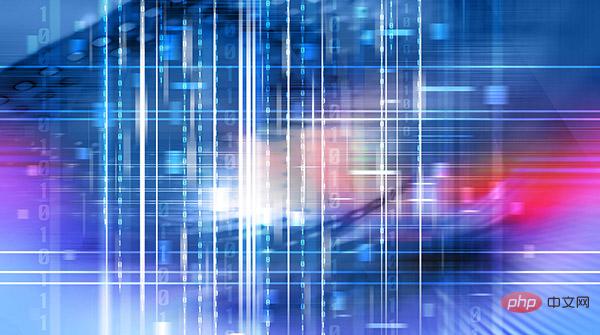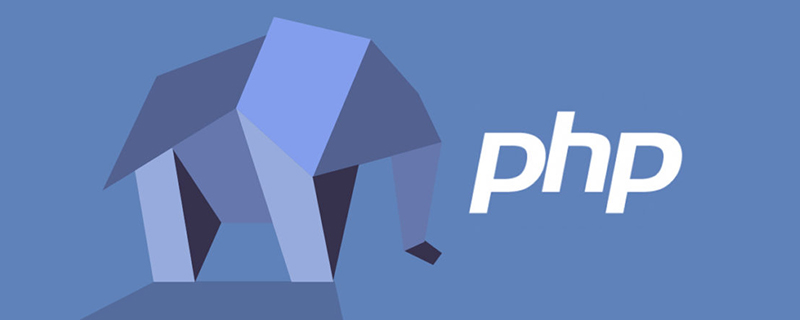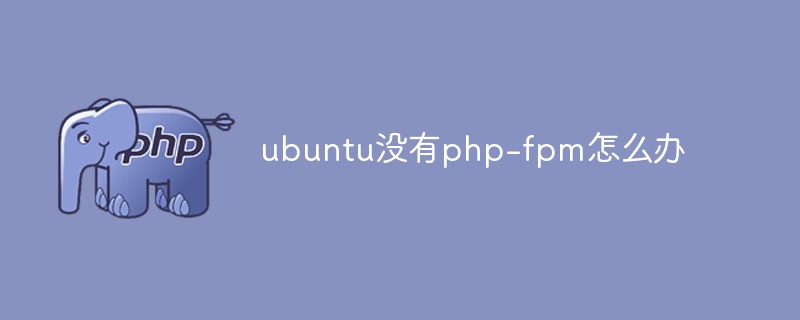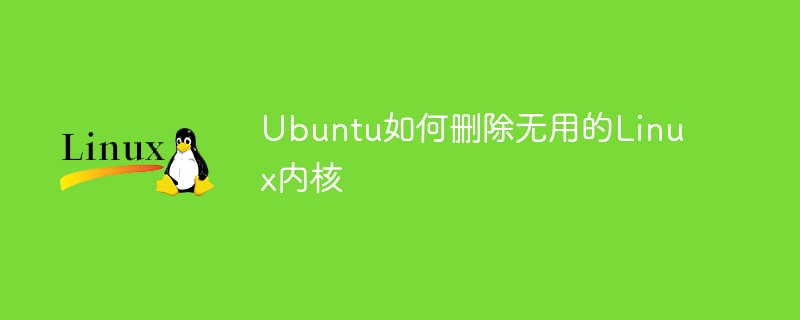How to install the PHP environment on 32-bit Ubuntu: 1. Open the command line and obtain the software package; 2. Install the MySQL database; 3. Install the Apache server; 4. Install PHP through sudo apt-get install, and Just let Apache support PHP.

The operating environment of this article: ubuntu 16.04 system, PHP5 version, DELL G3 computer
How to install the php environment in 32-bit ubuntu?
The establishment of PHP environment (LAMP) under Ubuntu 12.04 (32-bit)
The default installation under Ubuntu 12.04 32-bit is 5.3.10. It is not the following picture and text 5.4
1. First open the command line, switch to root identity, and get the latest software package
su root sudo apt-get install update
2. Install the MySQL database
sudo apt-get install mysql-server mysql-client
The picture below shows the prompt to enter the database password, and then press Enter. There will be a prompt after that. Enter it again and press Enter
After the installation is completed, enter the database to test whether the installation is successful. Once you see the welcome message, it will be ok.
mysql -uroot -p ***
Run the security wizard command:
sudo /usr/bin/mysql_secure_installation
3. Install the Apache server
sudo apt-get install apache2
After the installation is complete, test it and enter http://localhost/ or http in the browser ://127.0.0.1/
If "It works!" appears, it means the installation is successful.
4. Install PHP and let Apache support PHP
sudo apt-get install php5 libapache2-mod-php5
After the installation is complete, restart the Apache server
sudo /etc/init.d/apache2 restart
Then enter Apache’s www folder (default is in /var ), create the phpinfo.php file
cd /var/www ls vi phpinfo.php
and then write
<?php phpinfo(); ?>
in the phpinfo.php file. But we may not be able to save it after we finish writing, because we are now dealing with the files in the www directory. There is no write permission, so we first authorize all files in the www folder, and then we write the code.
chmod 777 /var/www/
Finally enter http://localhost/phpinfo.php in the browser, and you can see the php information
But at this time, you cannot connect to the database, and the corresponding module cannot If it is not installed, then let’s look at step 5
5, the installed php-mysql software package and some other commonly used modules
sudo apt-get install php5-mysql php5-curl php5-gd php5-idn php-pear php5-imagick php5-imap php5-mcrypt php5-memcache php5-ming php5-ps php5-pspell php5-recode php5-snmp php5-sqlite php5-tidy php5-xmlrpc php5-xsl
Then visit http://localhost/phpinfo again .php (it’s best to restart Apache first), then we can see the modules we added
6. Install phpMyAdmin
We can easily manage our MySQL database through phpMyAdmin
sudo apt-get install phpmyadmin
During the installation process, the following choices will appear, asking if you want to configure phpmyadmin. We select "YES"
and then you need to enter the MySQL password until the installation is completed.
Then visit http://localhost/phpmyadmin and you will reach the login interface of phpMyAdmin
Recommended learning: "PHP Video Tutorial"
---------------------------- ------------------------------------------
upgrade to The latest version of php
sudo add-apt-repository ppa:ondrej/php5
sudo apt-get update
sudo apt-get install php5
#php -v #查看php版本号
PHP 5.5.3-1+debphp.org~precise+2 (cli) (built: Aug 27 2013 09:14:56)
Copyright (c) 1997-2013 The PHP Group
Zend Engine v2.5.0, Copyright (c) 1998-2013 Zend Technologies
with Zend OPcache v7.0.3-dev, Copyright (c) 1999-2013, by Zend TechnologiesThe above is the detailed content of How to install php environment on 32-bit ubuntu. For more information, please follow other related articles on the PHP Chinese website!
 如何在 Ubuntu 和其他 Linux 下安装 IDLE Python IDEApr 08, 2023 pm 10:21 PM
如何在 Ubuntu 和其他 Linux 下安装 IDLE Python IDEApr 08, 2023 pm 10:21 PMIDLE(集成开发学习环境Integrated Development and Learning Environment)是一个 Python IDE,由 Python 语言本身编写,在 Windows 中通常作为 Python 安装 的一部分而安装。它是初学者的理想选择,使用起来很简单。对于那些正在学习 Python 的人,比如学生,它可以作为一个很好的 IDE 来开始使用。语法高亮、智能识别和自动补全等基本功能是这个 IDE 的一些特点。你可以随时在官方 文档 中了
 聊聊Ubuntu中怎么切换多个 PHP 版本Aug 30, 2022 pm 07:37 PM
聊聊Ubuntu中怎么切换多个 PHP 版本Aug 30, 2022 pm 07:37 PM如何在 Ubuntu 中切换多个 PHP 版本?下面本篇文章给大家介绍一下Ubuntu中切换多个 PHP 版本的方,希望对大家有所帮助!
 ubuntu怎么重启nginx服务May 23, 2023 pm 12:22 PM
ubuntu怎么重启nginx服务May 23, 2023 pm 12:22 PM1.使用快捷键【Ctrl+Alt+T】打开终端命令模式。2.可以通过以下方式重启nginx服务。方法一,在nginx可执行目录sbin下,输入以下命令重启/nginx-sreload#重启方法二,查找当前nginx进程号,然后输入命令:kill-HUP进程号,实现重启nginx服务#ps-ef|grepnginx#查找当前nginx进程号]#kill-TERM132#杀死nginx进程,132为nginx进程号
 docker内ubuntu乱码怎么办Nov 04, 2022 pm 12:04 PM
docker内ubuntu乱码怎么办Nov 04, 2022 pm 12:04 PMdocker内ubuntu乱码的解决办法:1、通过“locale”查看本地使用的语言环境;2、通过“locale -a”命令查看本地支持的语言环境;3、在“/etc/profile”文件的结尾处添加“export LANG=C.UTF-8”;4、重新加载“source /etc/profile”即可。
 ubuntu php无法启动服务怎么办Dec 19, 2022 am 09:46 AM
ubuntu php无法启动服务怎么办Dec 19, 2022 am 09:46 AMubuntu php无法启动服务的解决办法:1、在php-fpm.conf里面设置错误日志;2、执行“/usr/sbin/php-fpm7.4 --fpm-config /etc/php/fpm/php-fpm.conf”命令;3、修改php的配置文件注释即可。
 ubuntu没有php-fpm怎么办Feb 03, 2023 am 10:51 AM
ubuntu没有php-fpm怎么办Feb 03, 2023 am 10:51 AMubuntu没有php-fpm的解决办法:1、通过执行“sudo apt-get”命令添加php的源地址;2、查看有没有php7的包;3、通过“sudo apt-get install”命令安装PHP;4、修改配置监听9000端口来处理nginx的请求;5、通过“sudo service php7.2-fpm start”启动“php7.2-fpm”即可。
 Ubuntu如何删除无用的Linux内核May 14, 2023 pm 09:13 PM
Ubuntu如何删除无用的Linux内核May 14, 2023 pm 09:13 PM查找无用的镜像首先,您可以检查当前使用的内核,您可以通过命令获得信息:uname-aa.例如,它在我的桌面上显示为:复制代码代码如下:magc@magc-desktop:~$uname-aLinuxmagc-desktop2.6.24-19-RT#1SMPpremptRTThu8月21日02:08336003UTC2008i686GNU/Linux然后通过查看这台机器上所有内核的列表来决定哪些需要删除:运行命令:复制代码代码如下:dpkg-get-selections|greplinux例如,我
 Ubuntu下Nginx如何安装与配置May 17, 2023 am 11:01 AM
Ubuntu下Nginx如何安装与配置May 17, 2023 am 11:01 AM1.nginx介绍nginx是一个非常轻量级的http服务器,nginx,它的发音为“enginex”,是一个高性能的http和反向代理服务器,同时也是一个imap/pop3/smtp代理服务器。2.对php支持目前各种web服务器对php的支持一共有三种:(1)通过web服务器内置的模块来实现,例如apache的mod_php5,类似的apache内置的mod_perl可以对perl支持。(2)通过cgi来实现,这个就好比之前perl的cgi,该种方式的缺点是性能差,因为每次服务器遇到这些脚本


Hot AI Tools

Undresser.AI Undress
AI-powered app for creating realistic nude photos

AI Clothes Remover
Online AI tool for removing clothes from photos.

Undress AI Tool
Undress images for free

Clothoff.io
AI clothes remover

AI Hentai Generator
Generate AI Hentai for free.

Hot Article

Hot Tools

SublimeText3 English version
Recommended: Win version, supports code prompts!

SAP NetWeaver Server Adapter for Eclipse
Integrate Eclipse with SAP NetWeaver application server.

WebStorm Mac version
Useful JavaScript development tools

SublimeText3 Linux new version
SublimeText3 Linux latest version

MinGW - Minimalist GNU for Windows
This project is in the process of being migrated to osdn.net/projects/mingw, you can continue to follow us there. MinGW: A native Windows port of the GNU Compiler Collection (GCC), freely distributable import libraries and header files for building native Windows applications; includes extensions to the MSVC runtime to support C99 functionality. All MinGW software can run on 64-bit Windows platforms.






